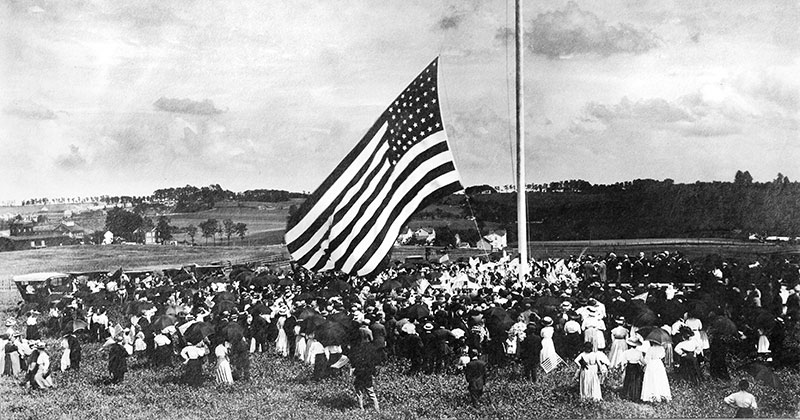
Sweden built up the main changeless settlements close Philadelphia in 1643. Dutch troops vanquished the region in 1655 until England took control of it in 1664. In 1681, King Charles II allowed the land to William Penn. He named the district Sylvania, which means woods. “Penn” was included later by the King out of appreciation for William’s dad.
William Penn, a Quaker, wanted religious opportunity and self-government for all who got to be homesteaders of Pennsylvania. Not long after arriving, Penn marked settlements with the Native Americans and paid them for the land he was given. In 1682, he established the city of Philadelphia. Penn came back to England in 1684. A few clashes emerged in his nonappearance, and numerous progressions brought about Pennsylvania’s legislature.
Amid the late 1600s to the mid-1700s, numerous fights were battled amongst England and France, both of whom needed the place that is known for North America. The French and Indian War started in western Pennsylvania in 1754. One of the most exceedingly terrible fights happened close present-day Pittsburgh, where the vast majority of British General Edward Braddock’s troops were killed. Battling proceeded in Pennsylvania until 1758; the war finished with a British triumph in 1763.
To pay for the war with France, England constrained new charges and exchange confinements on the American states. The settlements joined together and declined to pay charges. The First Continental Congress met in Philadelphia on Sept. 5, 1774, and voted to stop all exchange with England. In 1775, George Washington was selected leader of the armed force and the Revolutionary War started. On July 4, 1776, the Declaration of Independence was embraced in the Pennsylvania State House (now Independence Hall) in Philadelphia.
English armed forces attacked Pennsylvania in Sept. 1777. George Washington’s troops were crushed a few times, starting with Battle of Brandywine Creek. England executed numerous Americans in the Paoli Massacre only outside of Philadelphia. They then crossed the Schuylkill River and caught Philadelphia on Sept. 26, 1777. Washington’s armed force drove an assault to drive them out of the city, however the assault fizzled. Washington drove his troops to adjacent Valley Forge, where they spent an exceptionally brutal winter and spring.
Huge numbers of the pioneers in the Luzerne County fled to a fortress close present-day Wilkes-Barre. Soon after Britain left Philadelphia in the late spring of 1778, a few British warriors and Indians attacked this little stronghold murdering around 66% of the pilgrims. This occurrence got to be known as the Wyoming Valley Massacre.
The Constitutional Convention met in Philadelphia in 1787. Pennsylvania turned into the second state to confirm the U.S. Constitution and joined the United States of America on Dec. 12, 1787. Philadelphia served as the new country’s capital from 1790 to 1800.
By 1860, the issue of servitude isolated the country. Numerous Pennsylvanians were pioneers of the abolitionist development, which helped slaves escape to opportunity. Pennsylvania sent 340,000 troops to battle for the Union. In 1863, the Battle of Gettysburg was one of the bloodiest fights in history furthermore a noteworthy defining moment in the Civil War.
Pennsylvania’s enterprises kept on extending and create taking after the Civil War. The state turned into a main maker of oil, bond, electrical hardware, and aluminum. In 1873, Pittsburgh set up the country’s first steel process. A large number of settlers hurried to Pennsylvania searching for work. Numerous work issues came about because of the substantial deluge in populace.
Amid the mid 1900s, Pennsylvania kept on flourishing. A significant part of the coal and steel for the United States was created in this state. Numerous vast modern organizations moved there. As the U.S. entered World War I in 1917, Pennsylvania provided boats, weapons, and steel to help fighters win the war.
As of late, state pioneers are endeavoring to extend and enhance Pennsylvania’s economy. More support is being given to instructive, budgetary, and benefit enterprises. Philadelphia and Pittsburgh have likewise created a considerable lot of their chronicled locales. This has made a huge number of new occupations and pulled in new speculations to these urban communities.
